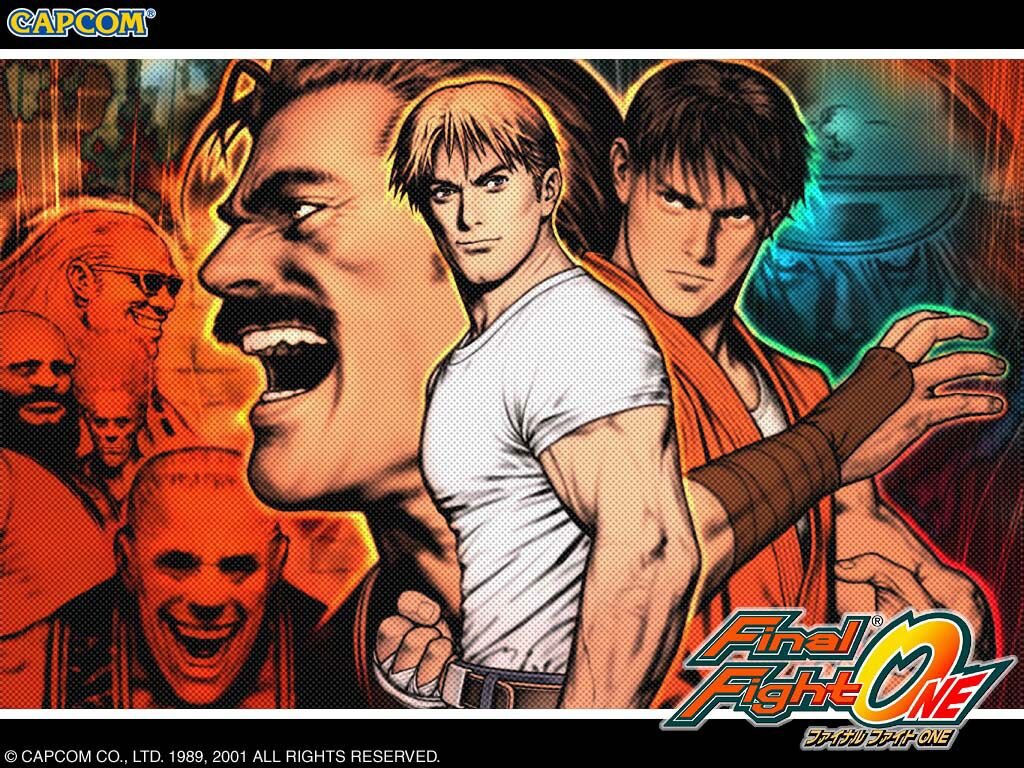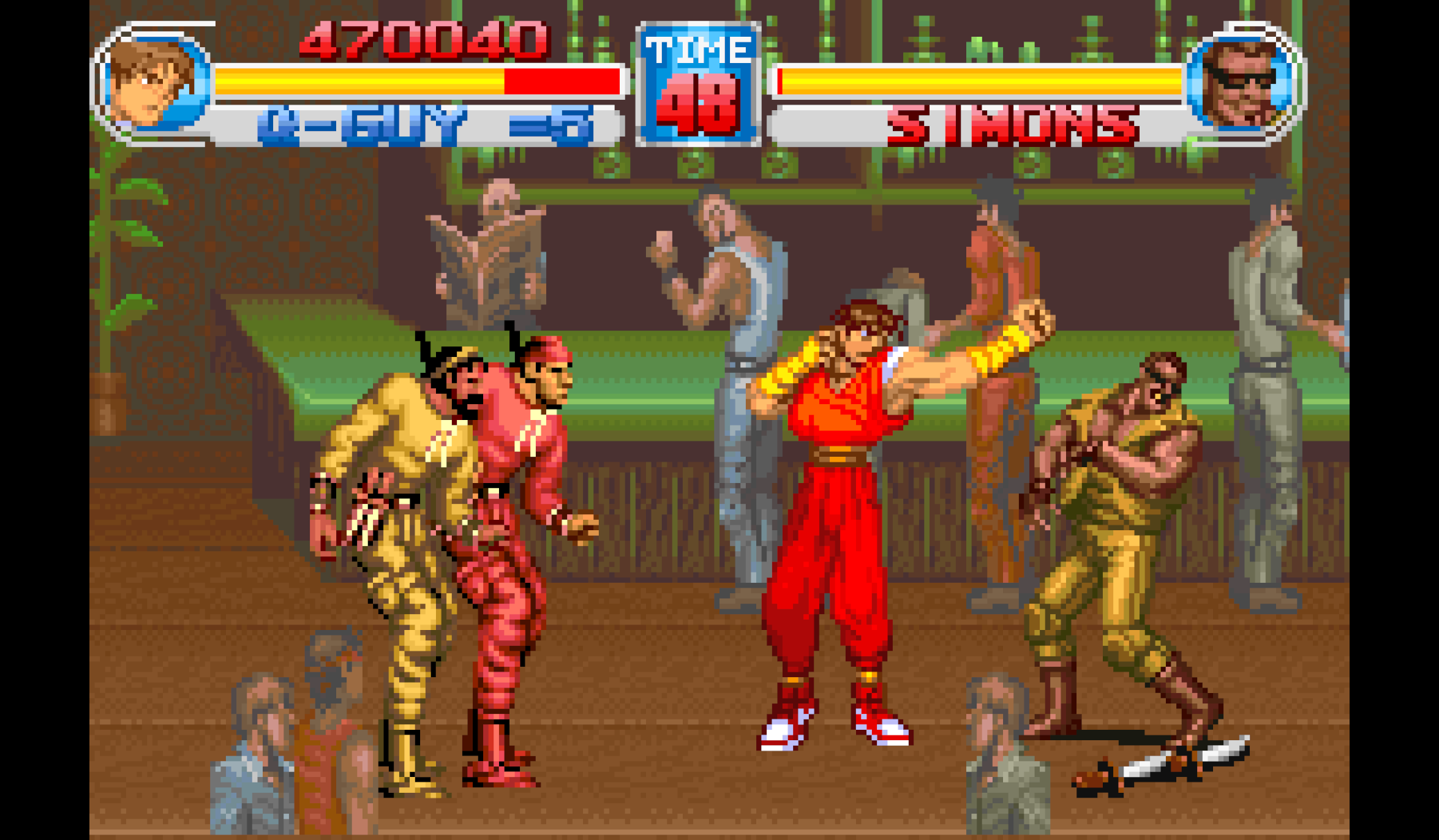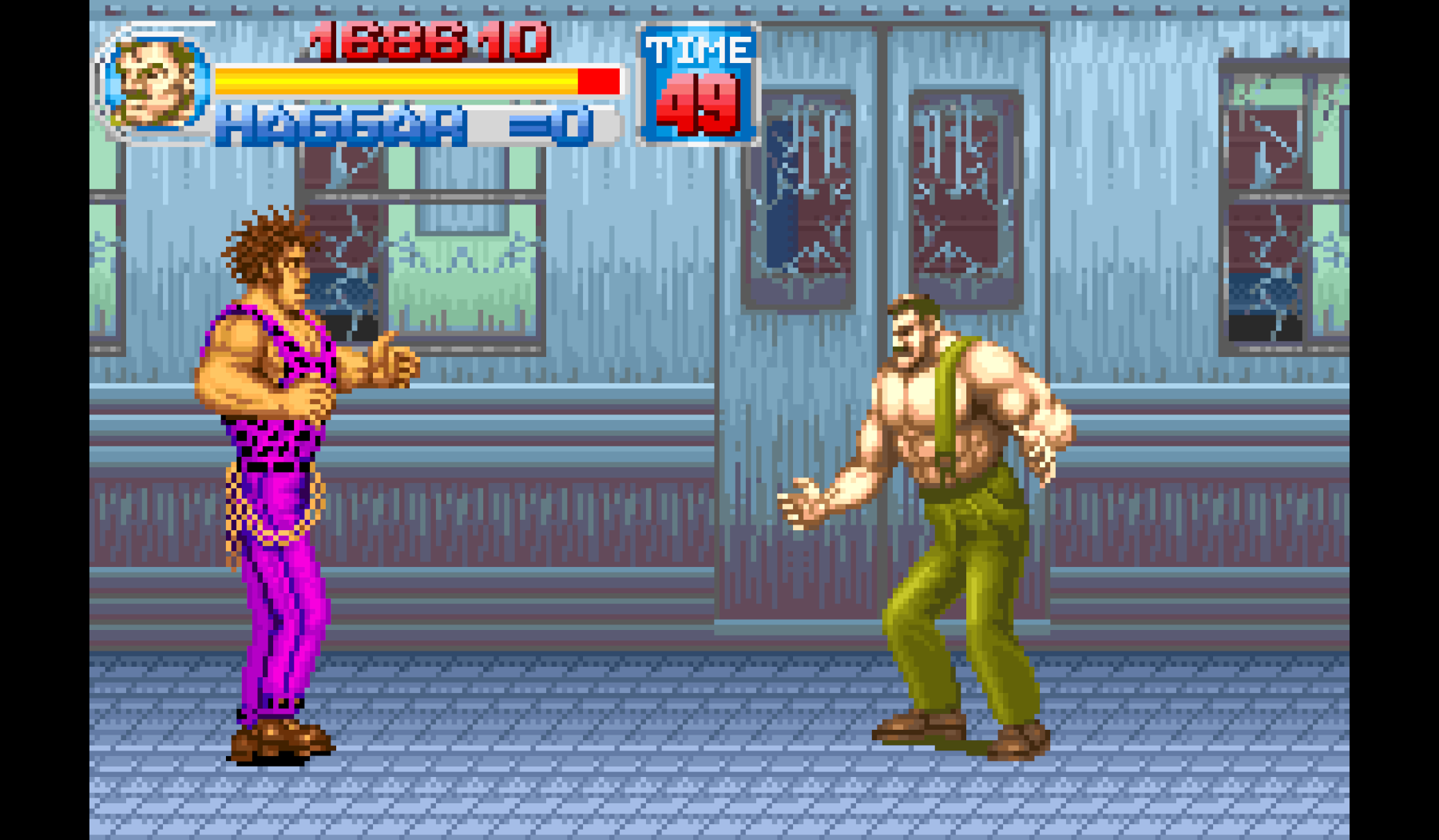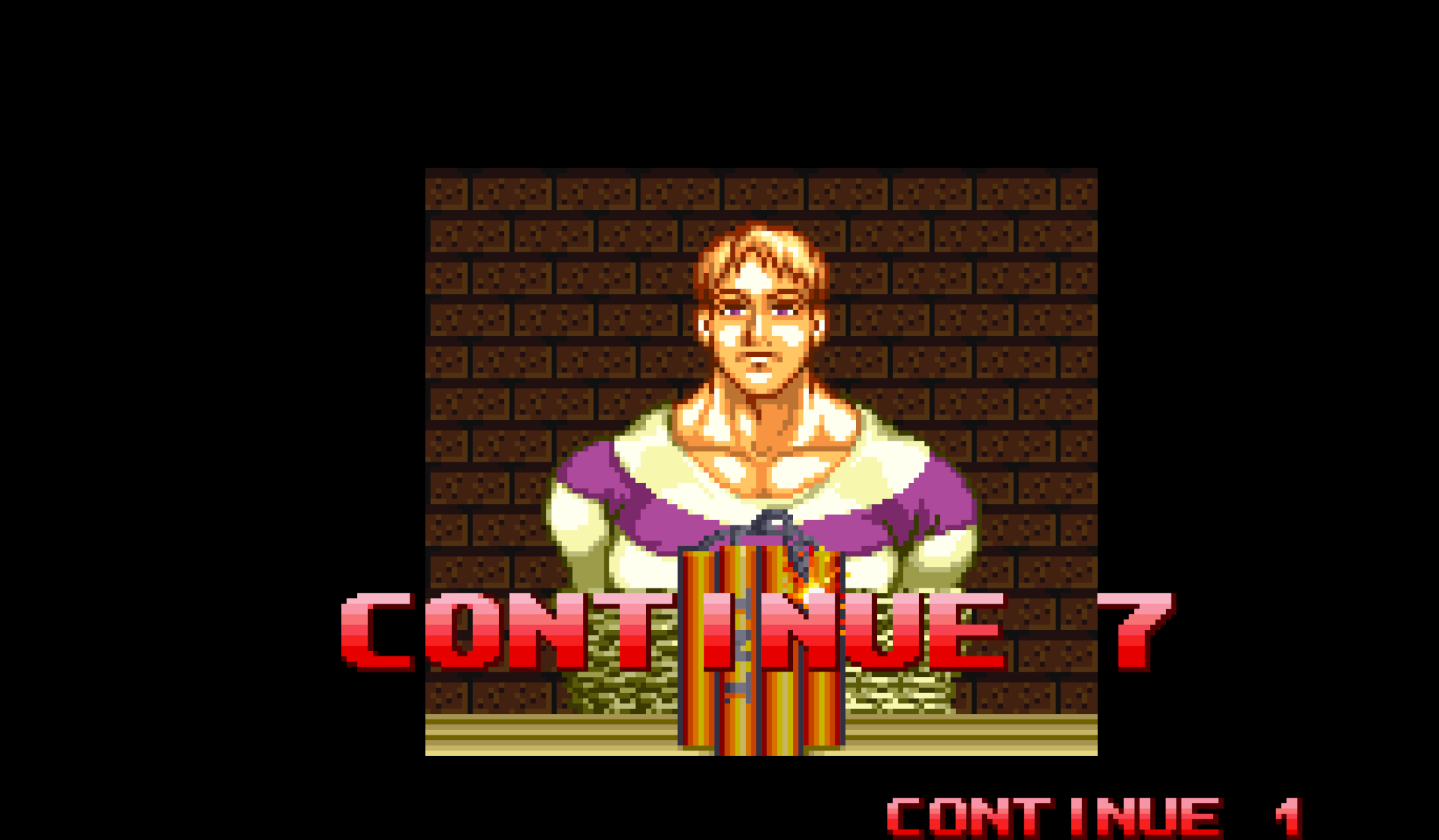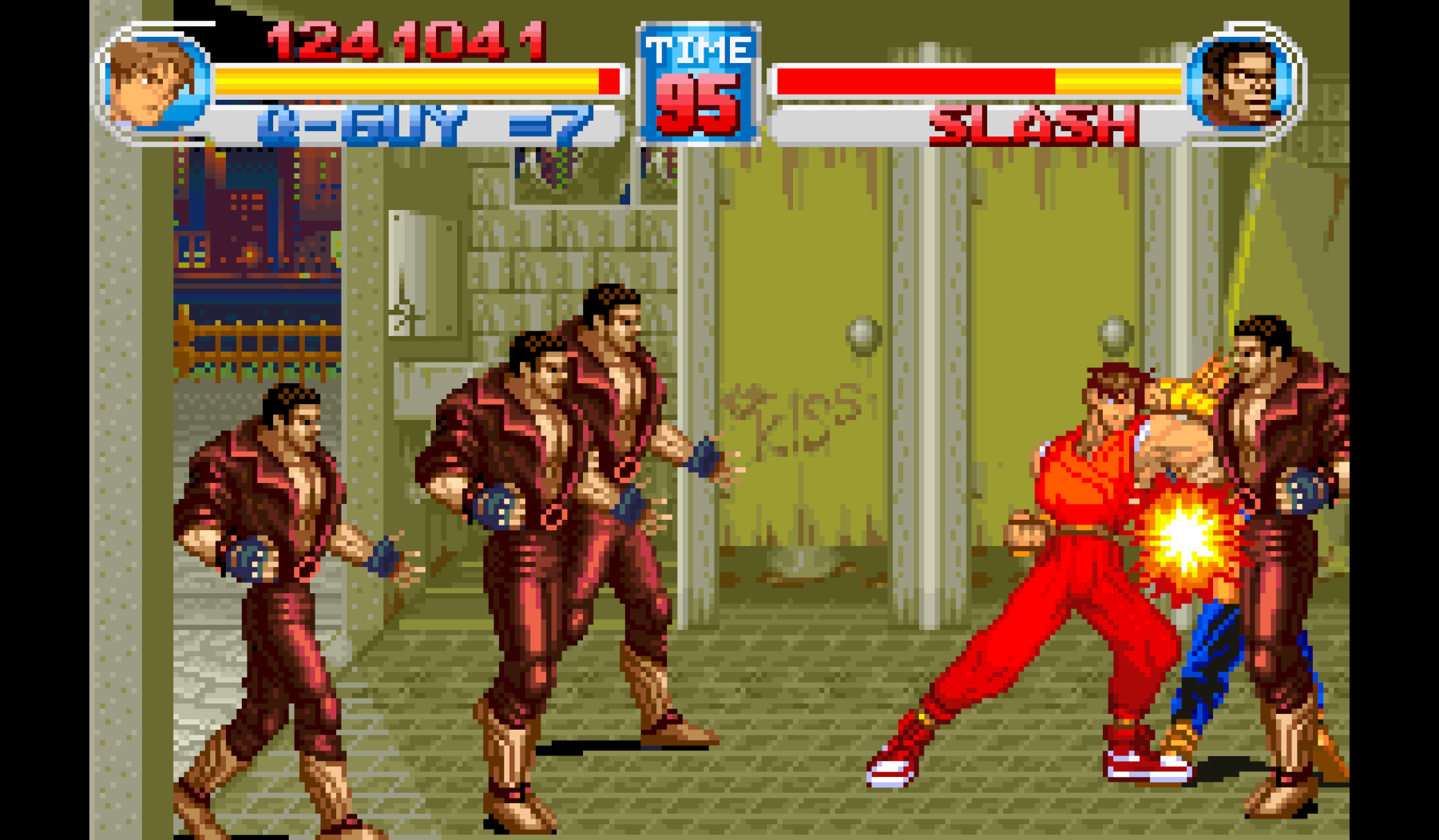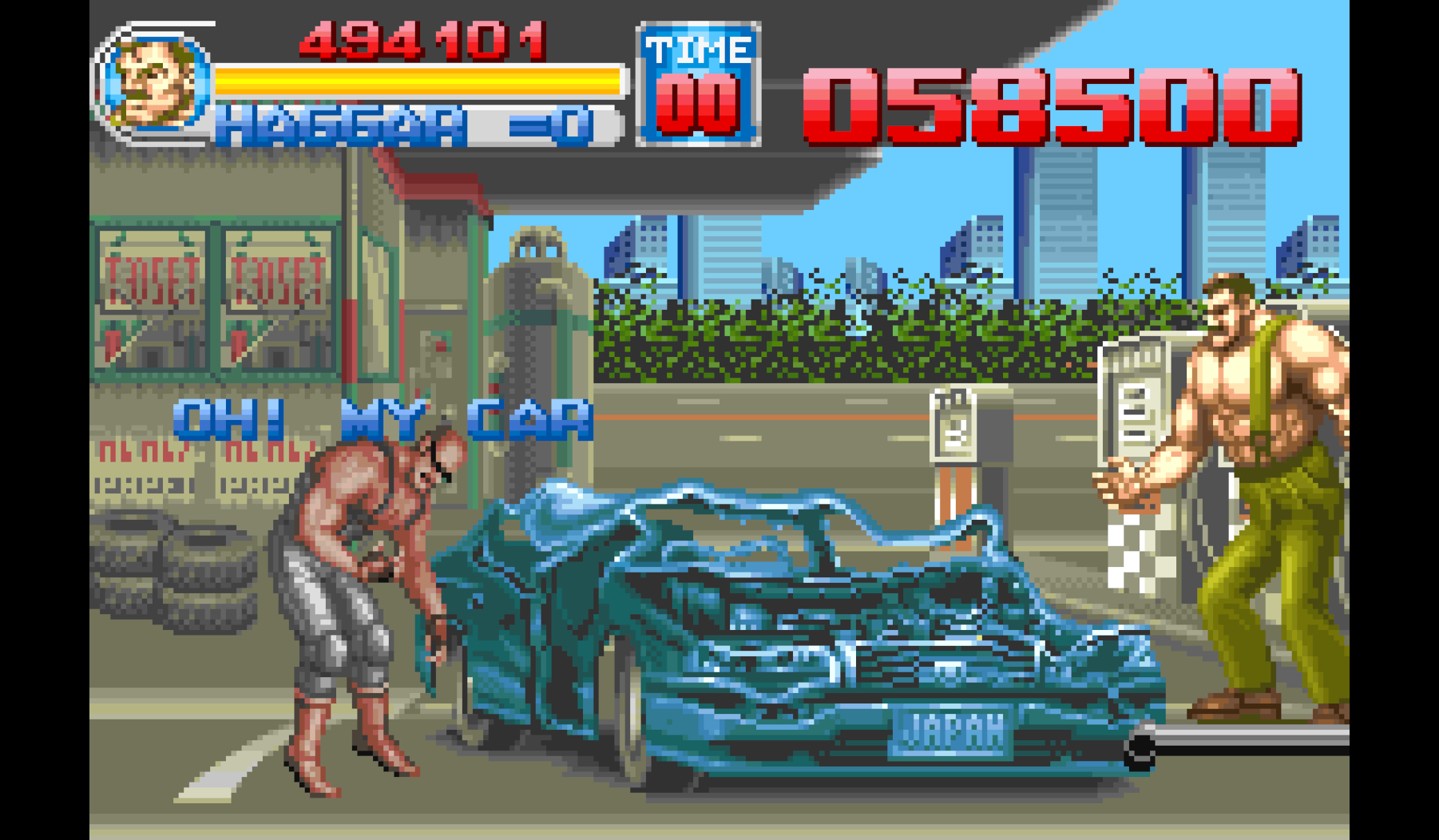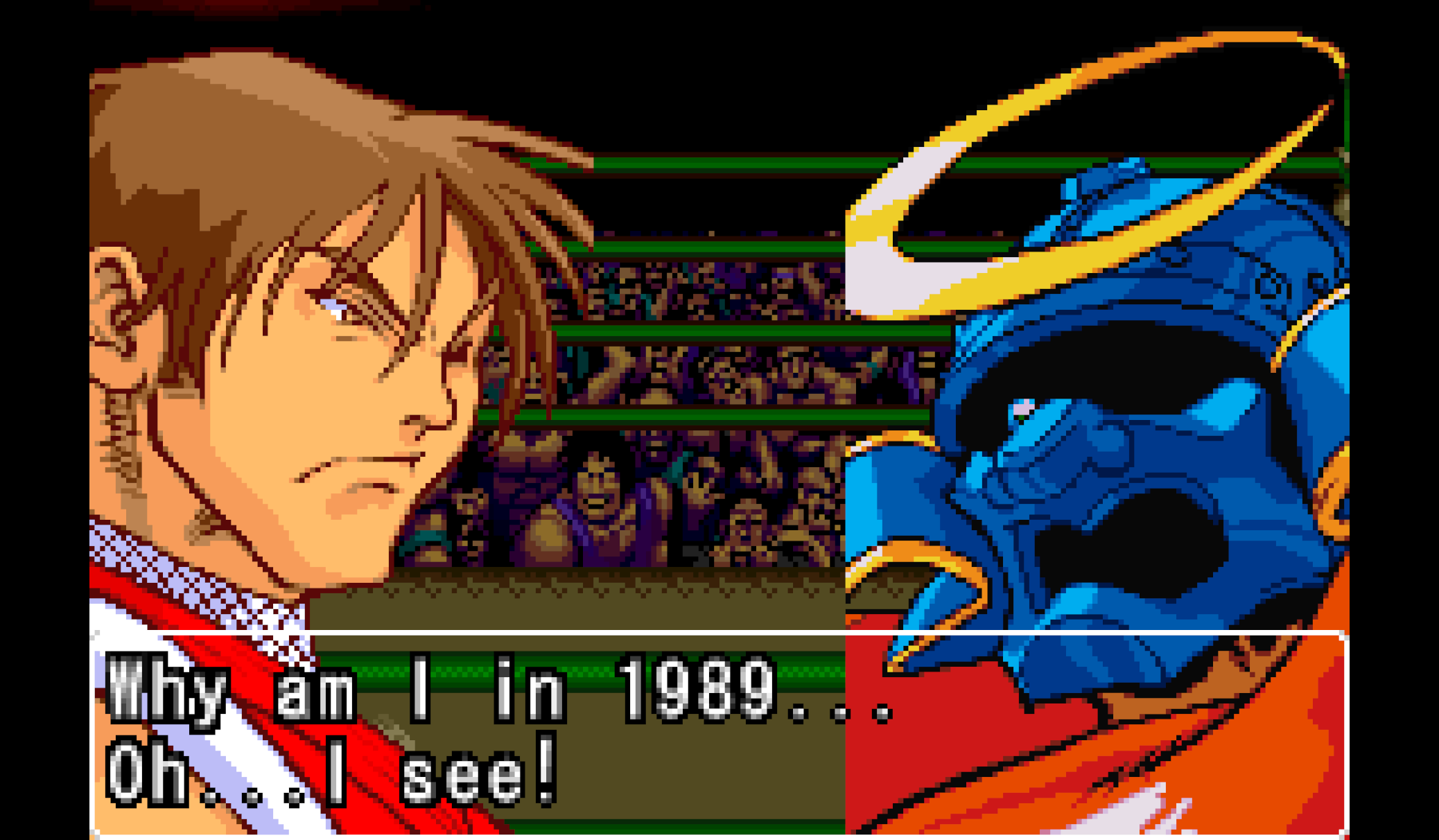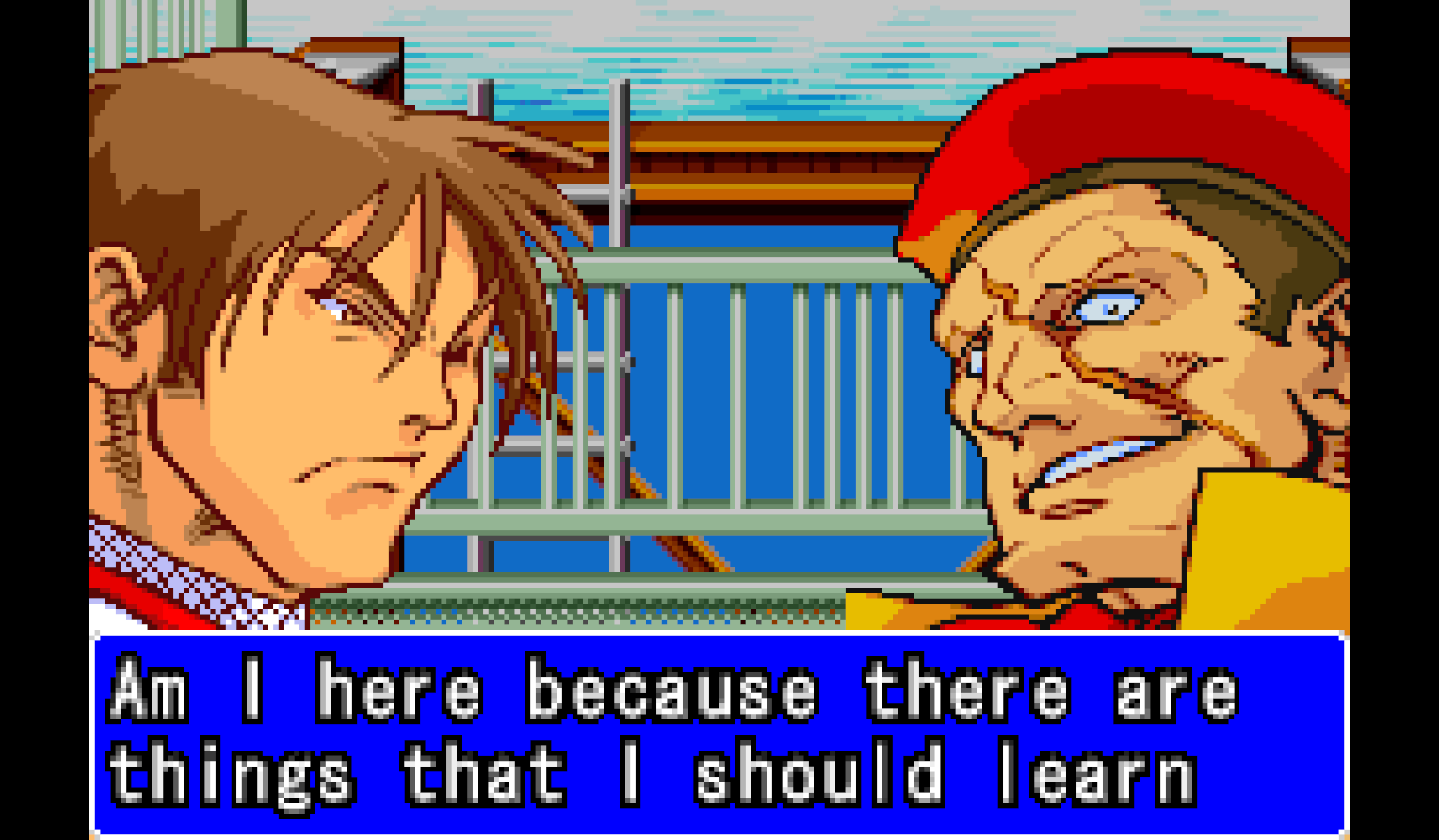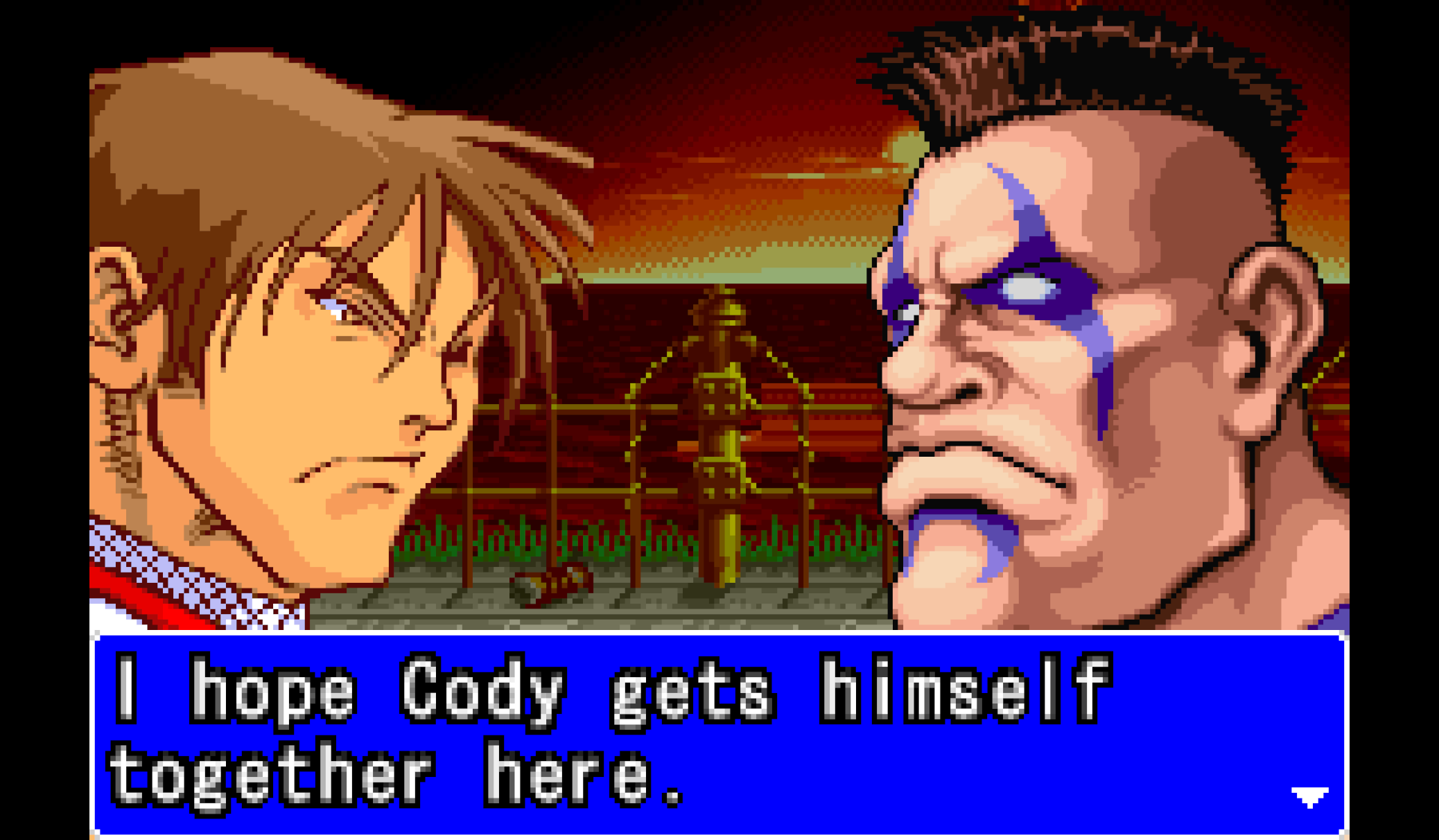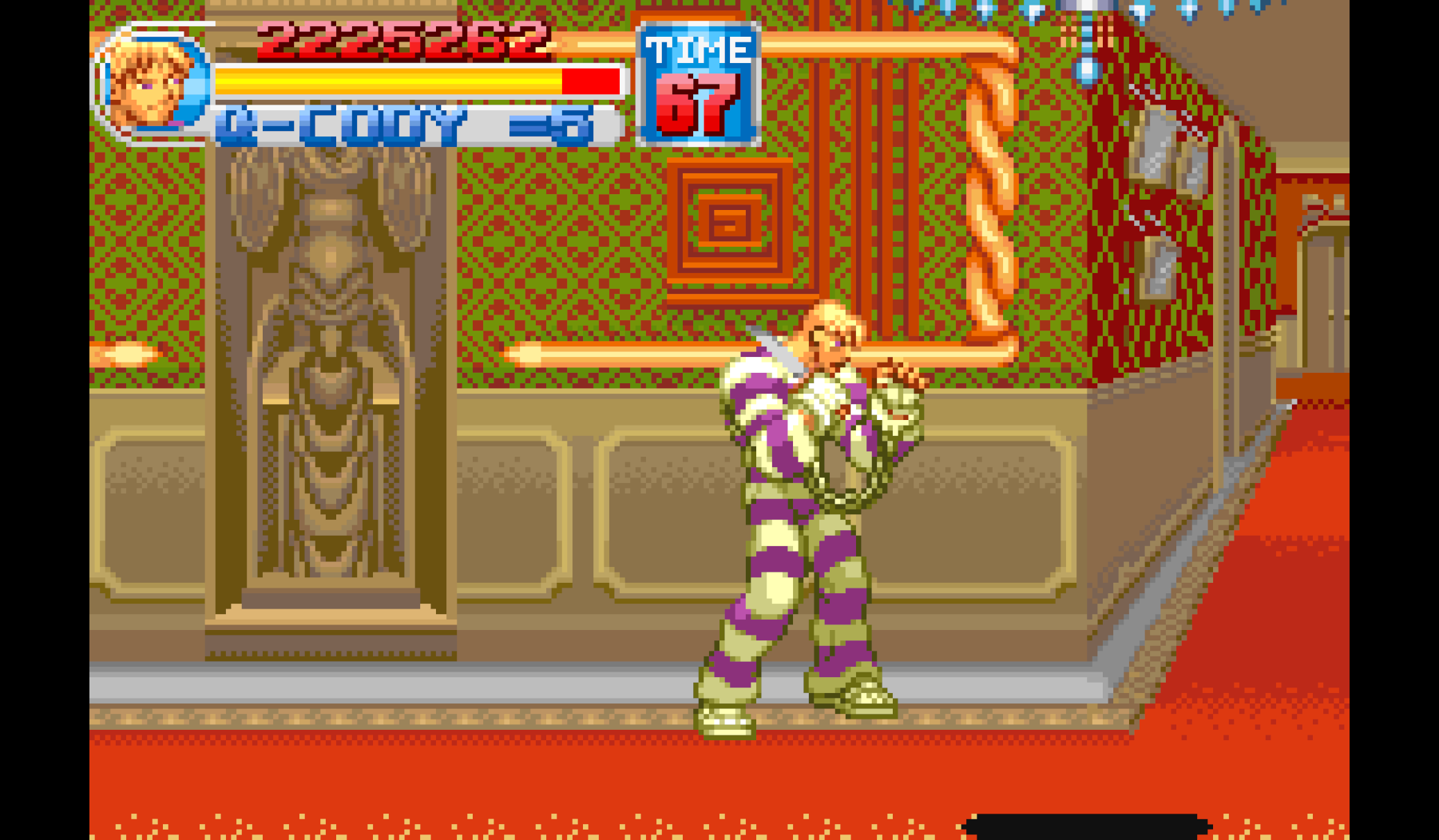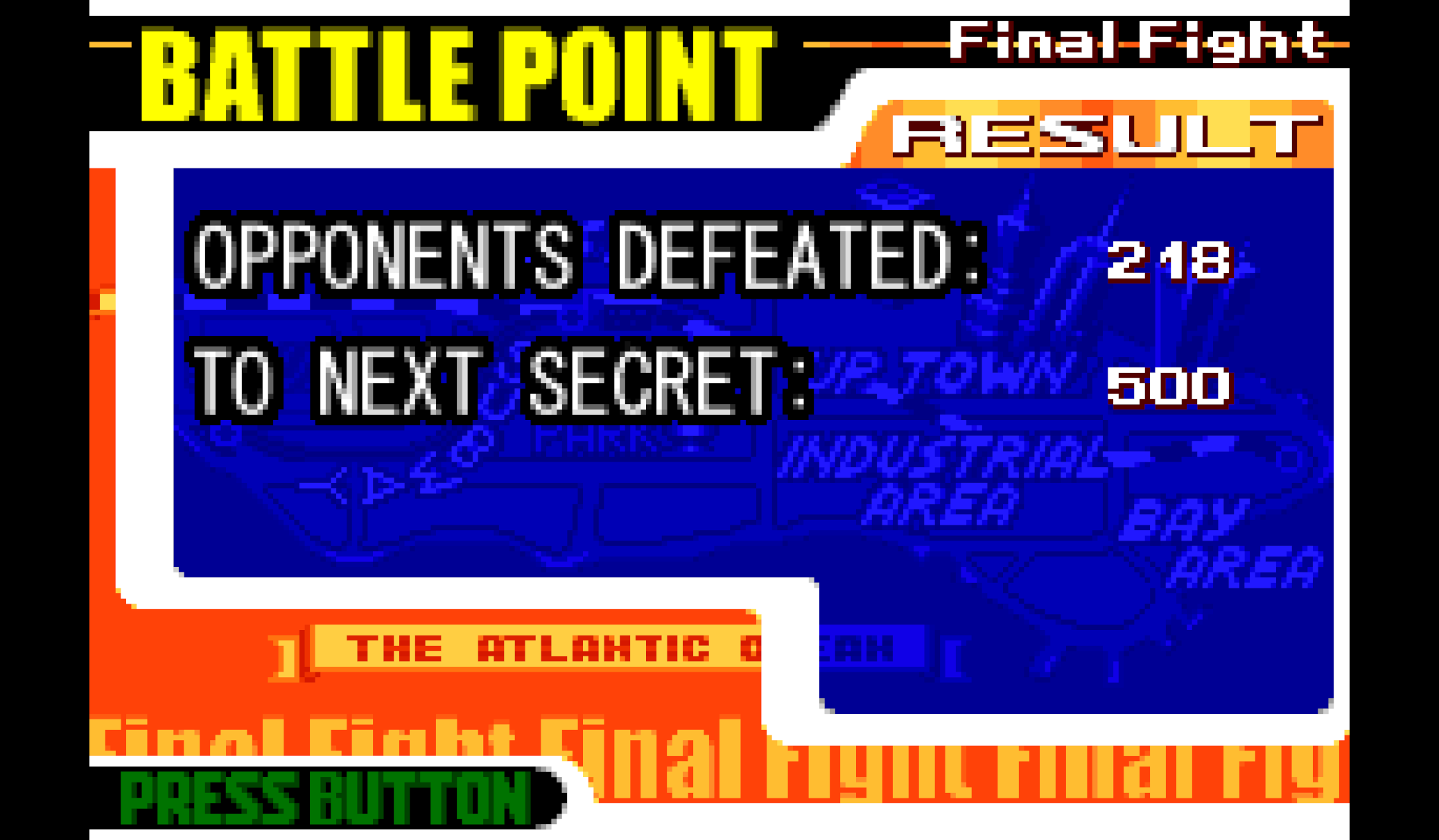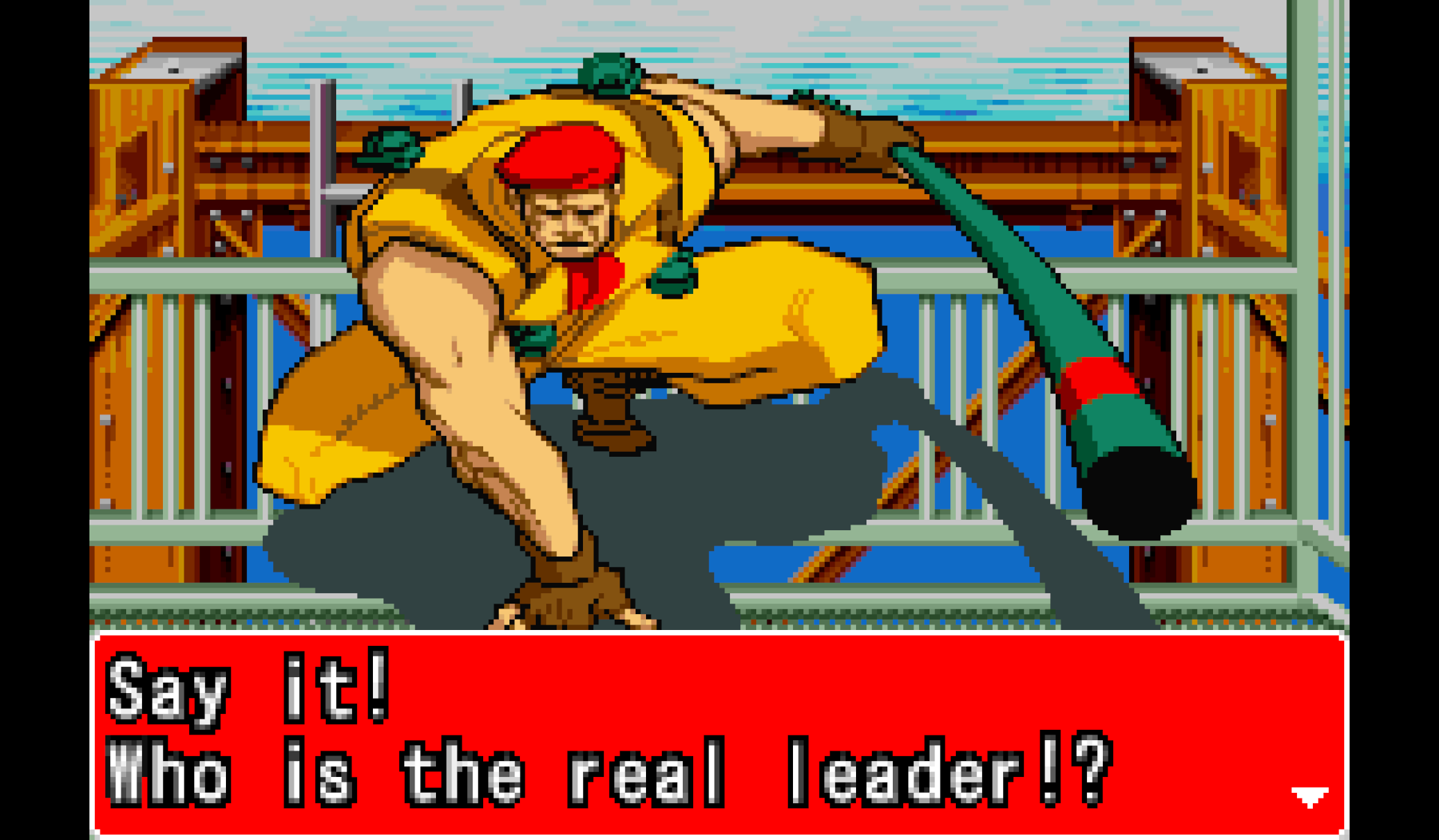Final Fight One review
Way back in the summer of 2003, I got a job as window washer at a local retirement home. My best friend Tyler had worked there for quite some time, and basically got me the job so we could hang during the day. Being the big gamers that we were, each of us had a Game Boy Advance SP, and we brought them to work everyday. When we weren’t dutifully fulfilling our quota of washing eight room’s windows per day—a number that Tyler ensured we never failed to reach, nor exceeded—were we playing GBA. Multiplayer games with the GBA’s link cable was our jam.
Sometimes we’d play a quick 10-minute game in the break room. Other times we’d hide out in a stairwell for a half hour or more, playing Game Boy in some rarely trafficked corridor. Granted, we could have washed way more windows, way faster, if we had the drive to. But I trusted in Tyler’s system, and his experience navigating the perplexing world of janitorial politics. Looking back on those community college days, playing Final Fight, Zelda: Four Swords, Super Puzzle Fighter, etc., is truly one of my fondest memories of that time. Even the fact that we were hiding out in an empty laundry room on a Sunday afternoon could not diminish the pure handheld gaming joy.
All of that to say, I’ve played quite a bit of Final Fight One on the GBA, and a good portion of that time in coop. While we played many games via link cable, Fight Fight got a heftiest chunk of time, perhaps due to my obsession with Guy in the Street Fighter Alpha series. I always played Guy (the Alpha version) and Tyler always played Cody, and we’d relentlessly pummeled the Mad Gear Gang across Metro City. It was violent, it was repetitive, and it was glorious! (Tyler, I think this goes without saying, but you’ll always be Cody.)
All these years later and I still freaking love Final Fight! I think it really nails much of the “game feel” (for lack of better term) that would eventually make Street Fighter II a worldwide phenomenon. Of course this game (the arcade original, that is) began development as a sequel to the first Street Fighter, and many FF characters have crossed over to appear in SF games, so there were bound to be similarities. The large sprites, the differing play styles among the playable characters, the satisfyingly weighty hits—these attributes combine to make the game a rock solid classic. It comes very close to being the quintessential beat’em up.
In terms of mechanics, FF is very similar to other beat’em ups of the era, like Double Dragon. The basic gameplay amounts to walk right and punch everything in sight. But upon further inspection, there are a few more options for how you choose to attack your foes.
First and foremost, there’s the obvious punching combo one can do by simply mashing the attack button. Then there’s the invincible special move performed by pressing both the attack and jump button simultaneously. This costs you some of your health to perform, but get you out of jam when you’re surrounded.
Next up—and I think that could be the secret to the game being so satisfying overall—is Final Fight’s grabs & throws. Grabbing one street punk and throwing him into a group of other enemies is great fun. If you catch an enemy with no one else around to interfere, you can just smack him around a bit with the attack button. And with Haggar, if you grab an enemy and jump, you can then piledrive the poor bastard into oblivion. Mixing grabs & throws in with the regular striking attacks does a lot to flesh out the game loop.
There is a standard jumping attack, a hefty jumpkick that will knock down any enemies it connects with, but that’s not all. Holding down whilst you jump-attack does a completely different move! With Guy, for example, the down jump-attack performs an elbow drop instead of a kick. (Cody performs a knee-drop.) This move does not knock enemies to the ground and, if timed right, will allow you to combo right into your normal standing attack sequence when you land.
Like any violent street brawler worth its salt, FF also features various weapons you can pick up and use too. If you pick up a knife with Cody, he can wield it for several strikes, while Guy and Haggar will merely throw it as a projectile. Cody’s actually quite a beast when he has a blade, as the knife attacks seem especially vicious.
Speaking of character-specific nuances that differentiate the protagonists, strongman Haggar can both carry the enemies he grabs and piledrive them. He’s supposedly good with the pipe weapon, though I can’t say I’ve noticed any difference. Guy can jump off the wall—kinda like Chun Li and Vega do in SF2—allowing him spring out into a sweet flying sidekick. Guy’s weapon of choice is supposedly the katana, though again, I’m not sure I’ve witnessed any special proficiency in actual gameplay.
Let’s get this out of the way: Final Fight One is not arcade-perfect. Judging by the audio and visuals, it seems like the developers based this GBA port on the SNES version, though this game has several improvements.
It’s funny that the developers chose to retain some of the sanitizing alterations from the SNES version, because it’s overwhelmingly remembered as a bad port. That game was one-player only, changed certain characters’ names, omitted a whole level, and left out Guy entirely—which is unforgivable! To make up for this, Capcom did later release Final Fight Guy, a version of the game that basically retained all the same disappointing limitations of the first port, but swapped out Cody for Guy. That game still lacked multiplayer, still omitted a level, and was still missing a playable character! Perhaps the game(s) sold well though, because Capcom’s direct sequels (Final Fight 2 and Final Fight 3) were released only on the SNES.
Like the SNES port, there’s no Poison or Roxy in this game. The female enemies have again been replaced with suitably punchable dudes, Billy and Sid. Back in days before 1-on-1 fighting games really took off, the idea of brawny male heroes physically beating on female characters (sometimes with knives and lead pipes) was frowned upon. So to avoid controversy, the ladies’ names and sprites were altered. The name of Stage 2’s boss was also changed for the SNES version—from “Sodom” to “Katana”—but he now has his original name back. Progress!
Final Fight One is the best Final Fight—yes, I said it—and this actually comes down to three things: unlockable options, overall presentation, and ties to Street Fighter. As previously mentioned, Final Fight started development as a sequel to the original Street Fighter, and storywise takes place in the same fictional universe. After appearing in FF, many of these characters began showing up in Street Fighter, sometimes in the playable roster.
Guy, Cody, Sodom, and Rolento were all playable in the Street Fighter Alpha series. Hugo was playable in Street Fighter III. And several cameos, Poison finally joined as a playable fighter by Street Fighter X Tekken and Ultra Street Fighter IV. (And yeah, I realize that Abigail was added to SFV, but his design in that game is so stupid and terrible that I’m just going to ignore it.)
FF1 draws on its SF connections in clever ways. Firstly, it pulls in some great character artwork from SFA3, not just for Cody & Guy, but also for Sodom and Rolento, giving them big splashy entrances. Then, in an act of sheer brilliant, the game includes alternate playable versions of Cody & Guy based on their Alpha appearances! These aren’t just swapped sprites either, α-Cody and α-Guy are treated as completely separate characters, and it’s amazing.
Putting the Alpha versions of Cody and Guy in game was cool enough just as fun bonus—like Guy in his original form is pretty cool, but Guy with his Alpha design is rad AF!—however the developers go so far as to play with the inherent time-travel element implied by their presence. See, α-Guy and α-Cody are basically the future versions of themselves, and the characters have changed since the events of FF.
Cody in particular is a much different place by SFA3; he’s literally in prison. So as the story goes, after defeating the Mad Gear Gang and rescuing Jessica in Final Fight, Cody just keeps on fighting. He becomes obsessed with it. Jessica breaks up with him, he becomes a ruffian vigilante, and—since he’s basically addicted to street fights—his violent conduct eventually lands him in jail. For the majority of his appearances in SF games then Cody is prisoner of the state; literally wearing a striped prison uniform with handcuffs on his wrists and everything.
I’ve always loved Cody’s story. The hero-turned-thug fall from grace is seen so rarely in games like this, even though the beat’em up genre is chock full of characters who would presumably meet a similar fate. Granted, story is obviously not often prioritized in the genre at all. Which is what makes α-Guy and α-Cody’s inclusions as full-on, time-displace characters so interesting!
The time travel motif is best illustrated in the pre-boss fight dialogue—which now that I think of is another cool addition they’ve made to the game! Before fighting an area’s boss, there’s a quick exchange of words, just enough text to let each character show a touch of personality. For α-Guy and α-Cody, their dialogue makes it clear they are reliving events from their past. They express confusion about being back to 1989 again, and Guy wonders if it’s just him having deja vu or if Cody has traveled back in time too.
Considering these characters were already bonuses added onto a port of a pretty old game, the devs really didn’t need to include these extra flourishes, but they did anyway. And the extra layer of care really elevates this game to a whole new level.
Along with α-Guy and α-Cody, FF1 includes other bonus that are unlocked as you play the game. Instead of going strictly by points, these rewards become available after a certain number of opponents are defeated, which feels entirely appropriate for FF’s constant brawling. With each punk you smash into the concrete you get one step closer to that next secret. According to this old GameFAQ, the unlockable rewards in Final Fight One are meted out like so:
Alpha Guy: Defeat 50 enemies
9 Lives: Defeat 200 enemies
Alpha Cody: Defeat 500 enemies
Stage Select: Defeat 800 enemies
Color Change (4 palettes per character): Defeat 1,300 enemies
Rapid Punch: Defeat 2,000 enemies
Conveniently, α-Guy is unlocked first; it takes only like two stages before you’ve dropped 50 enemies and get to play the game in style. Even after all the secrets have been unlocked, the “Battle Point” screen accessible from the menu will continue to keep a tally of how many opponents you’ve defeated. According to my old cart’s save file, I’m up to 9980. Not too shabby!
Being a portable game, FF1 features some handy quality-of-life improvements for gaming on the go. For one thing, the game auto-saves your option selections and game progress, making everything fairly foolproof. If you turn off the GBA at any point, it always seems to remember where you were. When you boot it up again the next time, FF1 tells you that a game was in progress, and gives you the option to jump right back into your last playthrough. (You can always decline and just proceed to the menu if you wish.) These “jump in/jump out” game states are convenient today, but damn if they weren’t an absolute godsend in the early 2000’s.
Final Fight One is my favorite version of Final Fight, and honestly, one of my favorite games on the GBA. That’s really saying something, considering that the handheld is home to a metric ton of great games, and many of them timeless classics. While it could have easily been a quick nostalgia cash-grab, or merely a competent arcade port to make up for the disappointing SNES game, the developers put real consideration into making FF1 something great. The loving craftsmanship on display here is truly beautiful. Now if you’ll excuse me, I’m off to crack some skulls.

